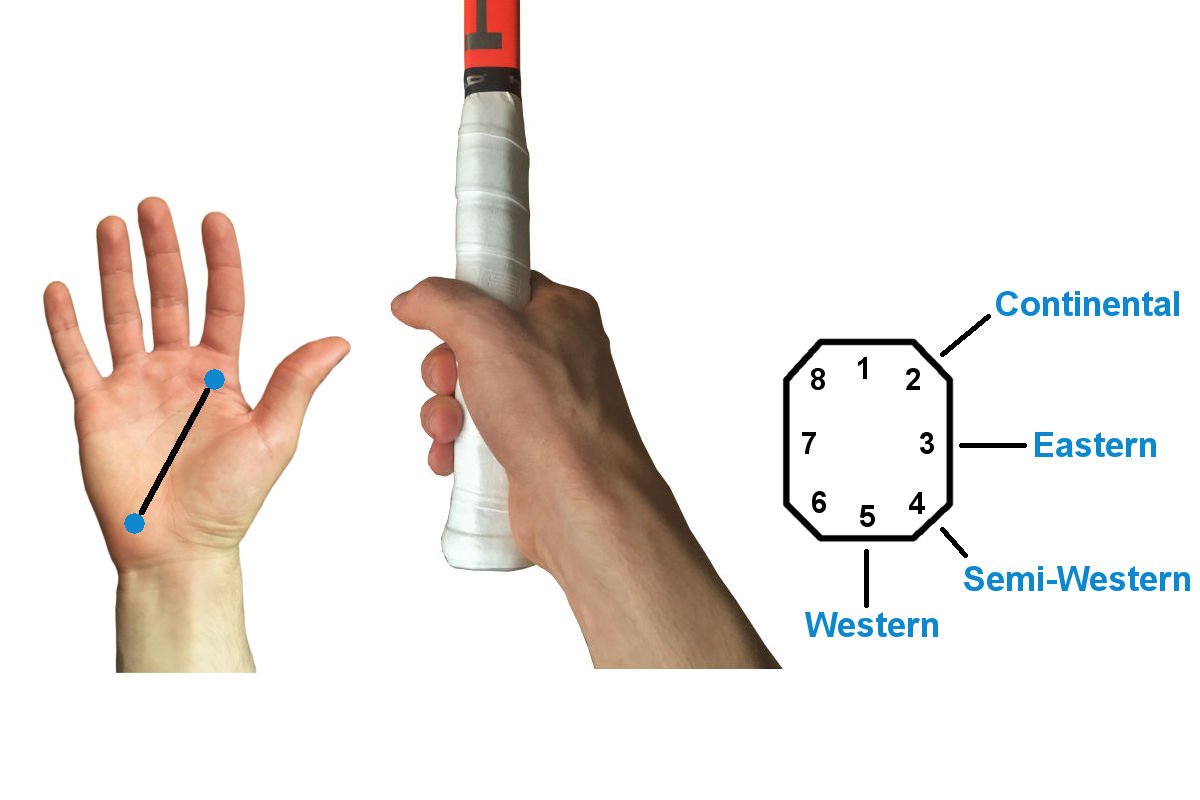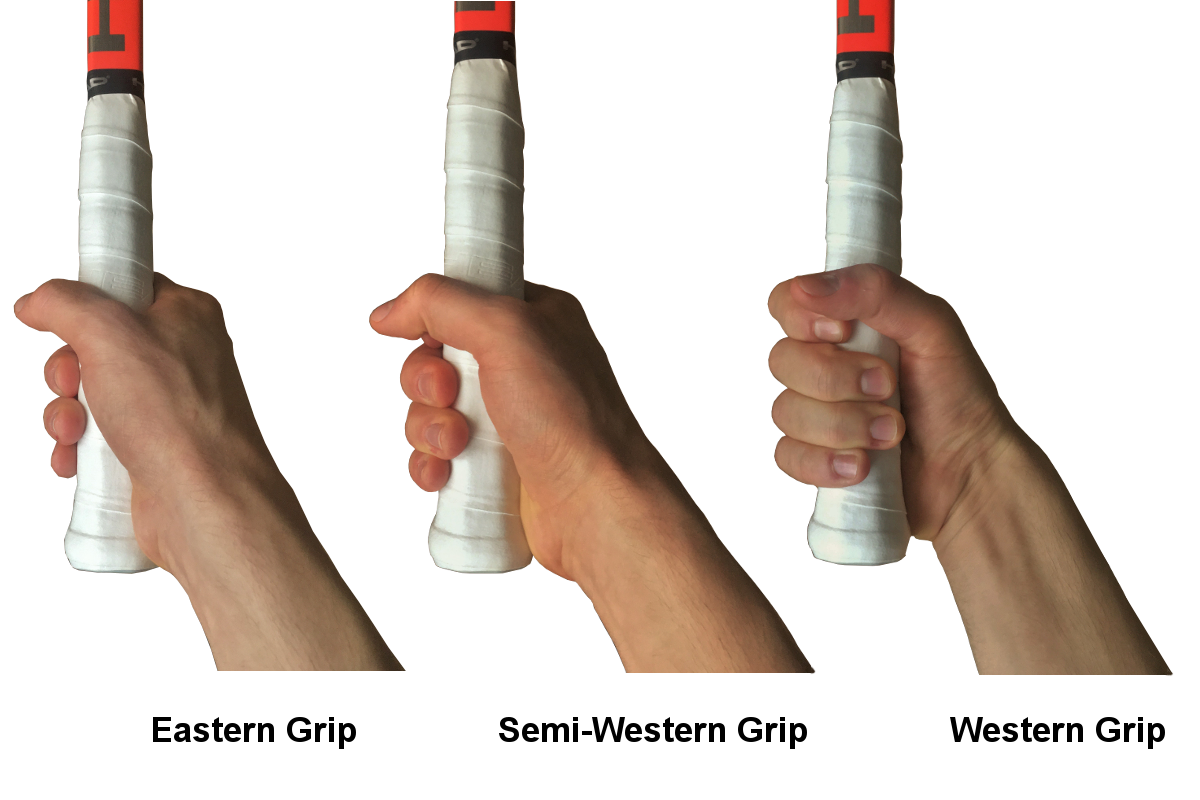7 Steps to a Powerful Forehand
For most tennis players a good forehand is the key to success. The natural stroke movement makes it especially easy to play. At the same time it is an effective means to put pressure on the opponent. That is why the forehand is often used to hit winners.
Generally the forehand is the first stroke that beginners learn when they start playing tennis. With the right technique you not only win a lot of points, but also save valuable energy in the match. In this guide we will go through the individual steps with you to bring your forehand to a new level.
Contents
1. Grip
2. Position
3. Preparation
4. Backswing
5. Forward Swing
6. Contact Point
7. Follow Through
1. Grip
The basic condition for a successful shot is the correct grip. This is especially the case with the forehand. Since during the stroke movement there are sometimes great forces, a stable grip is absolutely necessary. In addition, the grip should lie comfortably in the hand during the stroke.
If you look at the butt cap of your tennis racket, you will notice that the grip has an octagonal shape. For a better understanding we turn the racket head perpendicular to the ground. Now mark the individual bevels of the grip with the numbers from 1 to 8, starting with the top surface and going around clockwise.

The numbers now indicate the area on which you place the knuckle of the index finger and the palm of the little finger. There are three fundamental grips with different characteristics especially for the forehand:
- Eastern grip
- Semi-Western grip
- Western grip
In general you always use your dominant hand for the forehand. If you are right-handed, you use your right hand. Left-handed people take their left hand accordingly. The following descriptions show the position of a right-hander. For left-handers, the information is the other way round.

Eastern Grip
The Eastern grip puts the knuckle and the palm on bevel number 3, which allows you to hit the tennis ball with a lot of power. This results in straight and hard shots with a flat trajectory. However, this grip is less interesting for players who like to play with topspin.
Semi-Western Grip
The most popular forehand grip is the semi-western grip. The vast majority of tennis players use it. The grip here is based on the fourth bevel. Basically this grip offers you a combination of power and topspin. For this reason the Semi-Western grip is very well suited for today’s dynamic game.
Western Grip
Compared to the other grips, the Western grip is rather an exception. In this version, you turn your wrist further down to bevel 5, which allows you to give the ball a lot of topspin, but it reduces power. Due to the extreme position of the wrist, the Western grip is relatively difficult to play. We therefore advise you to choose either the Eastern or the Semi-Western grip.
2. Position
Ideally you should stand in the middle of the court before each shot. From there you can cover up to 70% of the court with your forehand. Now hold your racket in your right hand in front of your body. The racket should be slightly inclined with the head facing up. At the same moment your left hand is holding the throat of the racket to stabilize your position.
The footwork also plays an important role with the forehand. In this case, it is best to take an open stance. Make also sure that your muscles are not cramped. The more relaxed your muscles are, the more freedom of movement you have.
3. Preparation
Before a ball comes towards you, you should always do a so-called “split step”. This is an easy step on your toes, which will put you in the ready position for the next shot
When the ball is in the air and flying in your direction, turn your upper body to the Right. At this moment, you stretch your right arm halfway with the racket.
Turn your left arm until it is parallel to the baseline. Your left shoulder then points towards the ball. In addition, you should bend your knees slightly to build up Energy. Keep your eyes on the ball at all times during the whole process.
4. Backswing
Immediately after this the backswing takes place, in which you swing the racket further back. The tennis racket should be on the right side of your body. Don’t move your arm too far back, because you won’t have enough time to swing the racket.
This movement shifts your body weight to your right foot. To keep your balance, move your left leg forward a little bit. Make sure that you don’t get into a supine position, but have a stable stance.
5. Forward Swing
As soon as the tennis ball bounces on the ground, you can start the actual stroke. First, you drop the racket down a little to create speed using gravity. Make sure that your wrist is loose. The butt cap should also face the ball during this process. Then accelerate the racket and follow through.
The most important thing is to turn your upper body to the left during the Forehand movement. In this way, you will get the maximum swing. In principle, you don’t always have to apply a lot of power to get a good forehand. The right technique is just as important.
6. Contact Point
The optimal timing is very important for the forehand as well as for the other basic strokes in tennis. In this case, the best meeting point of the ball is in front of your body.
The distance to the ball must not be too big or too small. Tennis players often have the problem that they hit the ball too late, i.e. too close to their body. From there it is then difficult to hit a controlled forehand.
When contacting the ball, the racket head should be approximately parallel to the net. With the topspin forehand you hit the ball in a slight upward movement. You “wipe” the tennis ball to give it a forward rotation.
Also make sure that you hit the ball with the sweetspot of the tennis racket.
7. Follow Through
The forehand is completed with the follow through. After contact with the ball, you continue to swing the racket over your left shoulder or head. The speed of the racket decreases step by step.
Under no circumstances should you break your swing in the middle. You would simply be using unnecessary energy in order to slow down. Turn your upper body to the left so that your right shoulder is facing your opponent.
When you are finished with the swing, you can get ready for the next shot.